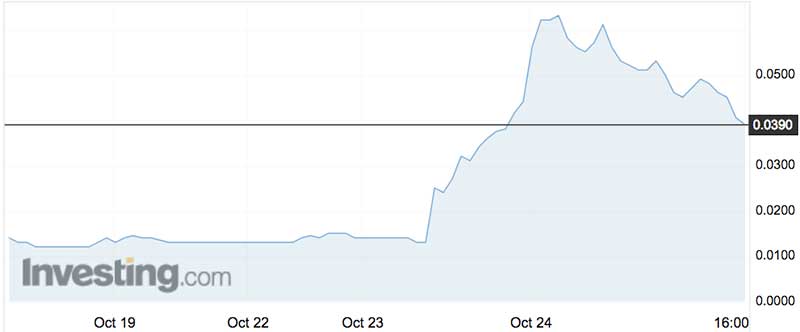Cancer fighter Bard1 jumps more than 450pc before falling back to earth

Pic: Charnchai / iStock / Getty Images Plus via Getty Images
Cancer detector Bard1 Life Sciences took investors on a rollercoaster ride Wednesday after adding breast cancer testing to its line-up earlier in the week.
After tripling on Tuesday, the stock (ASX:BD1) put on another 70 per cent Wednesday morning to hit an intraday high of 7.5c. That’s a gain of about 475 per cent compared to the 1.3c it was fetching the day before.
It was the highest price seen since Bard1 transformed from a gold miner EuroGold in 2016. (Its share price rose as high as 27.7c in 2009.)
Almost $20 million worth of shares were traded by 11.30am AEST — before the profit-taking began.
By the end of the day the stock had fallen all the way back to 3.9c — down 11 per cent. (See graph below).
The biotech has never achieved the giddy heights of its previous life as a gold explorer. But that may be about to change.
BARD1 has combined a biomarker and an algorithm into a blood test that can detect 6 per cent more cases of ovarian cancer than simply by using the algorithm.
It is now adapting that test to breast cancer. A lung cancer test is further back in the development process.

Bard1 says there is no blood test available on the market for screening or early detection of breast cancer.
The research shows that the BARD1 BC test has high diagnostic accuracy for detection of breast cancer and can accurately distinguish malignant breast cancer from benign lesions.
The idea is to make a non-invasive test for women who don’t have symptoms and aren’t high risk.
- Subscribe to our daily newsletter
- Bookmark this link for small cap news
- Join our small cap Facebook group
- Follow us on Facebook or Twitter
“The new BARD1 Breast Cancer test addresses an unmet need for an accurate, reliable and affordable blood test to detect breast cancer early,” said chief Dr Leearne Hinch.
She says the breast cancer diagnostics market globally is second only to lung cancer, and expected to be worth about $US36.4 billion in 2021.
The company plans to develop both the ovarian and breast cancer tests, which use the same platform, in parallel.
Breast cancer is the most common cancer in women and 85 per cent of the cases occur in women with no history in the family.
UNLOCK INSIGHTS
Discover the untold stories of emerging ASX stocks.
Daily news and expert analysis, it's free to subscribe.
By proceeding, you confirm you understand that we handle personal information in accordance with our Privacy Policy.








